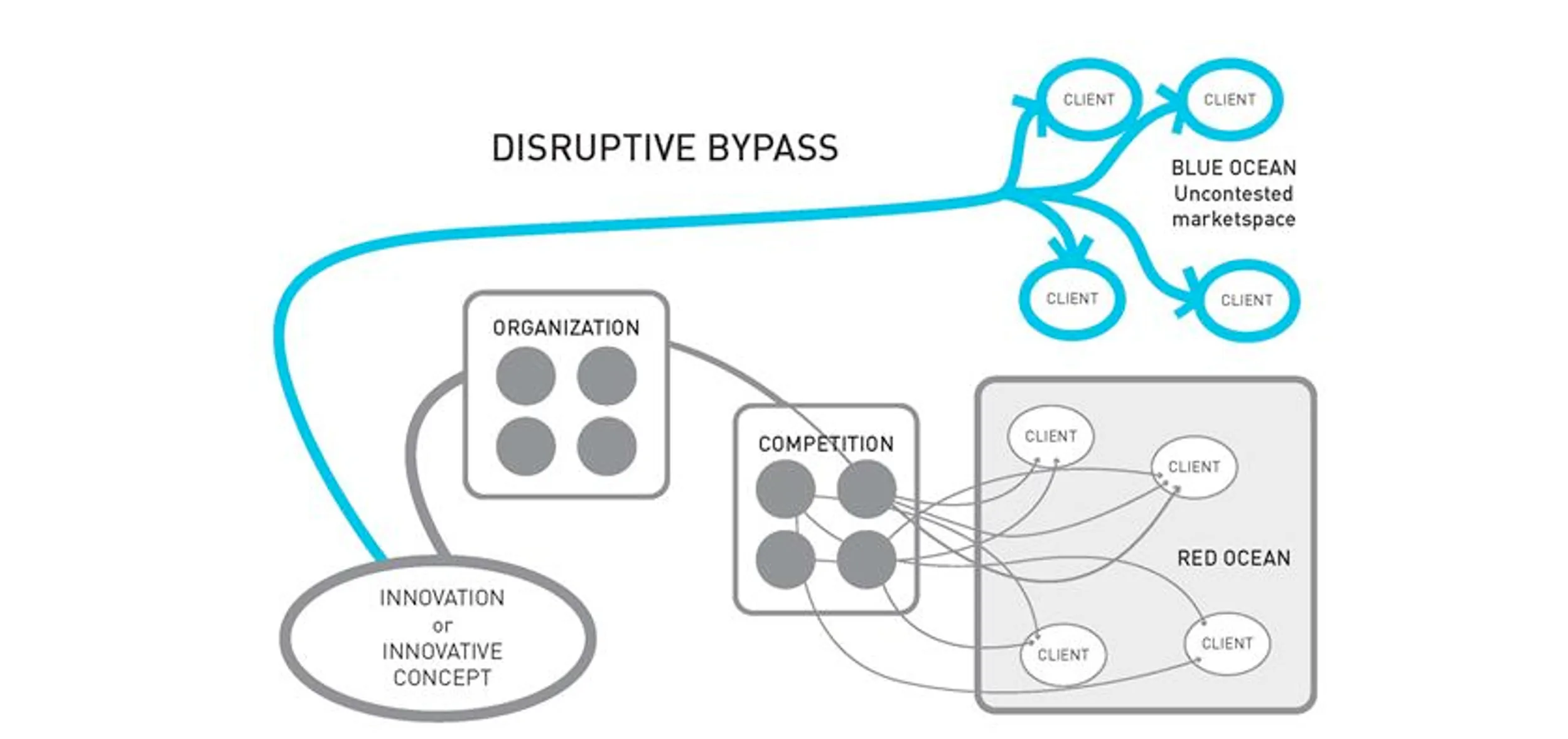Disruptive bypass

In a world driven by disruption, traditional models no longer suffice. This article explores the “Disruptive Bypass” strategy, an innovative approach to bypass resistance, create market impact, and organically drive change within organizations. Discover how to surprise stakeholders, cross the chasm, and carve out your own Blue Ocean.
The Disruptive Bypass
In an Organization 3.0 culture, change isn’t feared, it’s embraced, even when it disrupts internal systems or the broader market. Designing and planning are essential first steps, but execution often involves multiple stages and persistent effort.
From Limitation to Opportunity
In traditional economies, constraints like time, resources, and people often defined outcomes. Today, in an Interdependent Economy, transparency turns these constraints into opportunities. Simply put: if a product or service doesn’t stand out, it shouldn’t be launched. Market disruption isn’t just a byproduct, it’s often the goal.
By creating your own Blue Ocean, you sidestep competition entirely. But beware of the chasm.
Crossing the Chasm
In Geoffrey Moore’s Crossing the Chasm, a critical gap exists between early adopters and the mainstream market. Early adopters are eager for change, while mainstream customers prefer stability. Bridging this motivation gap is essential for innovation to succeed. Treat change as a product that needs to wow your market, whether that’s customers, colleagues, or stakeholders.
The Disruptive Bypass Strategy
During WWII, the German Blitzkrieg advanced rapidly by bypassing strongholds rather than confronting them directly. Similarly, when introducing innovative concepts, resistance can often be avoided by circumventing established systems rather than challenging them head-on. This is the essence of the disruptive bypass: moving smartly, not forcefully.
Red Ocean vs. Blue Ocean
- Red Ocean: Competing in an existing market, facing resistance, and using substantial resources for minimal gains.
- Blue Ocean: Creating new market spaces with disruptive, compelling products or services that attract attention and reduce resistance. By appealing to new leaders within your organization, those drawn to innovation, you build organic support. These leaders, in turn, influence others, shrinking resistance over time.
Practical Applications for Every Role
You don’t need to be a senior executive to create change. You can bypass structures by introducing small but impactful initiatives:
- Launch internal knowledge groups.
- Organize trend sessions with external experts.
- Share stories on corporate forums or external blogs.
- Start a wiki library with engaging multimedia resources.
- Conduct social media training sessions for colleagues
- Organize visits to key stakeholders.
In short: Do something bold. Do something unexpected. Be disruptive.
By strategically bypassing obstacles, you can drive meaningful change, whether you’re reshaping a market or revolutionizing internal operations.
Source: 14.2 The disruptive bypass: the organization bypasses itself!